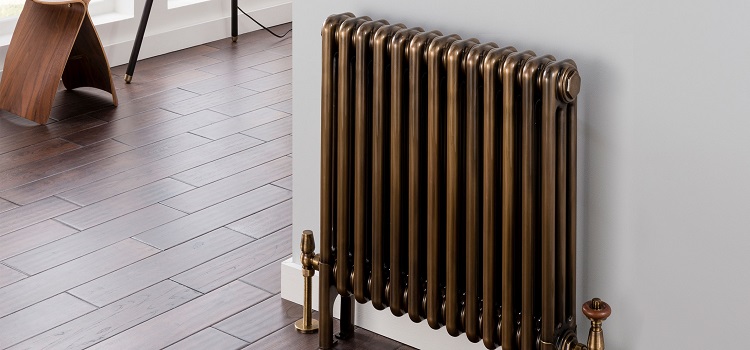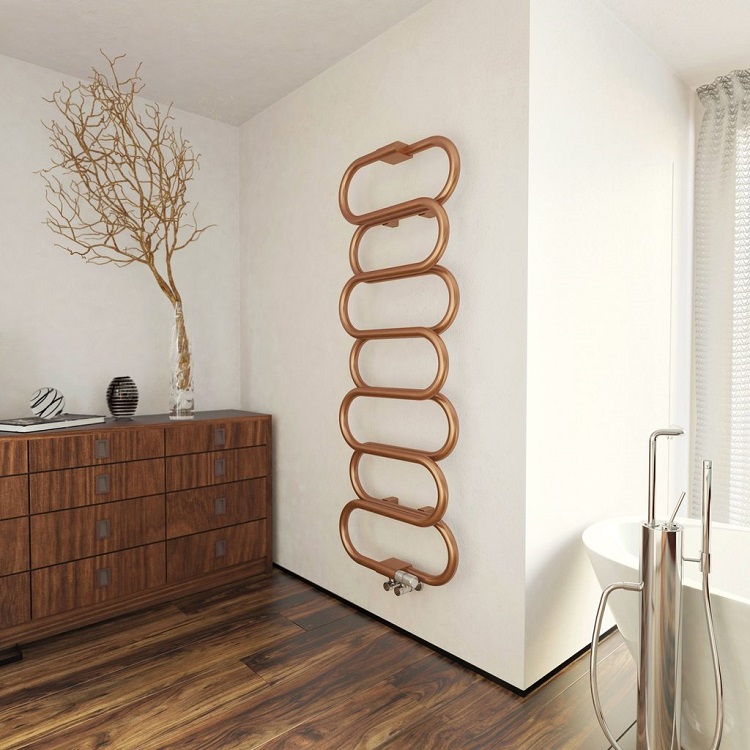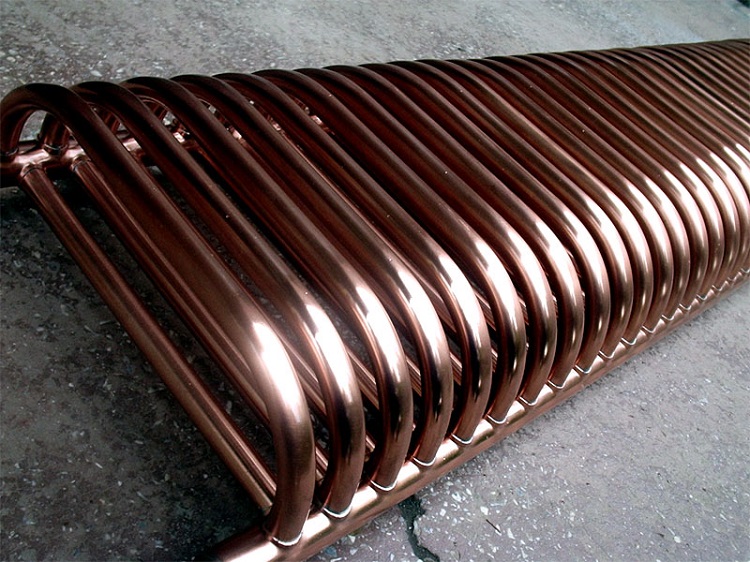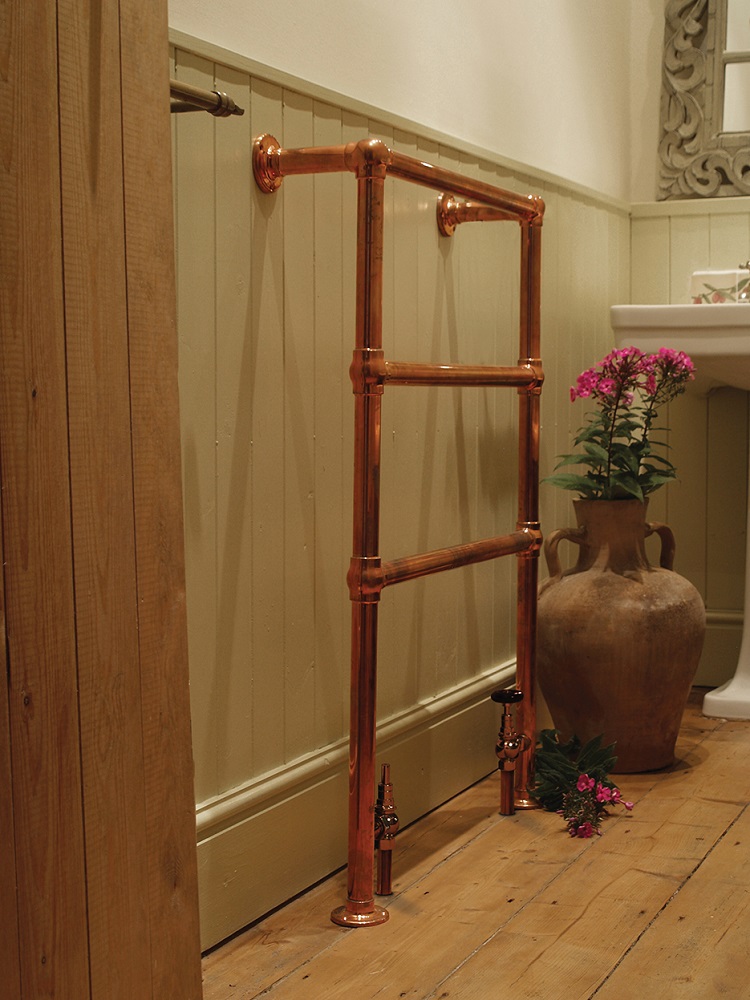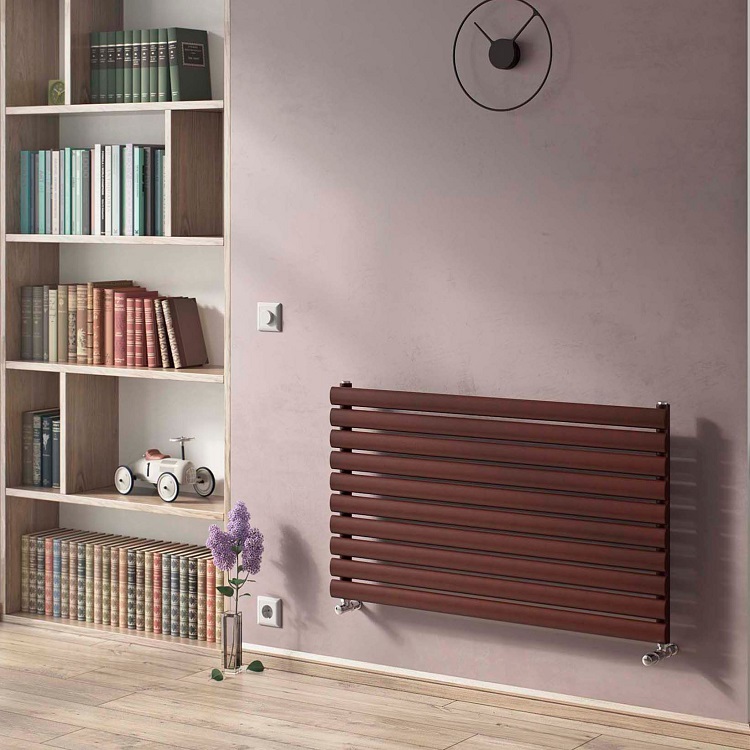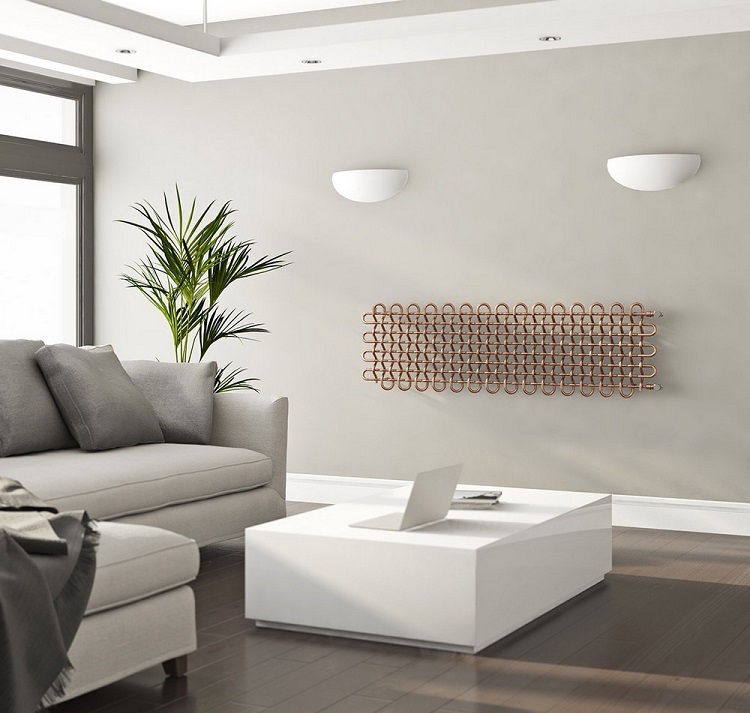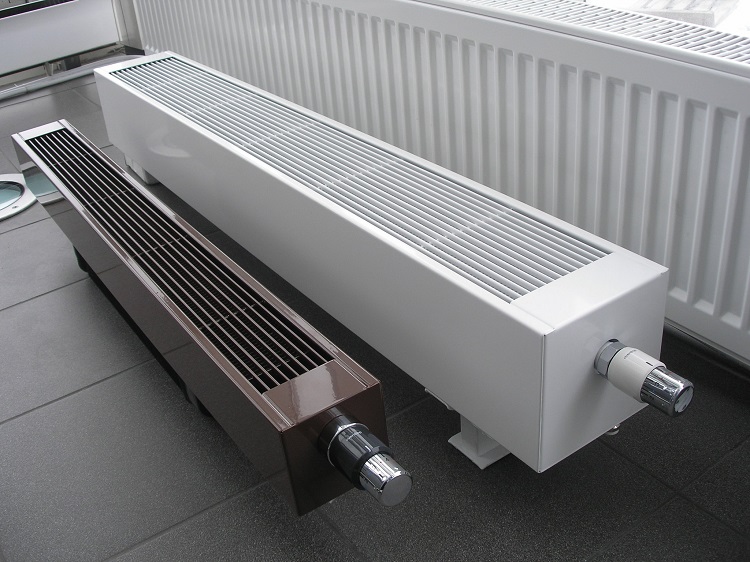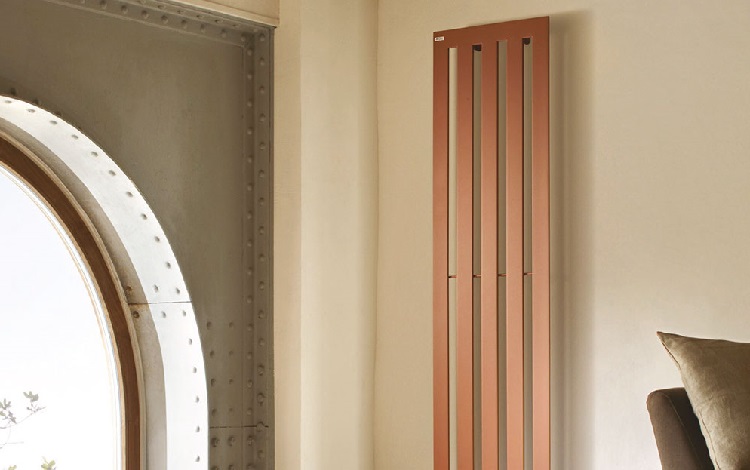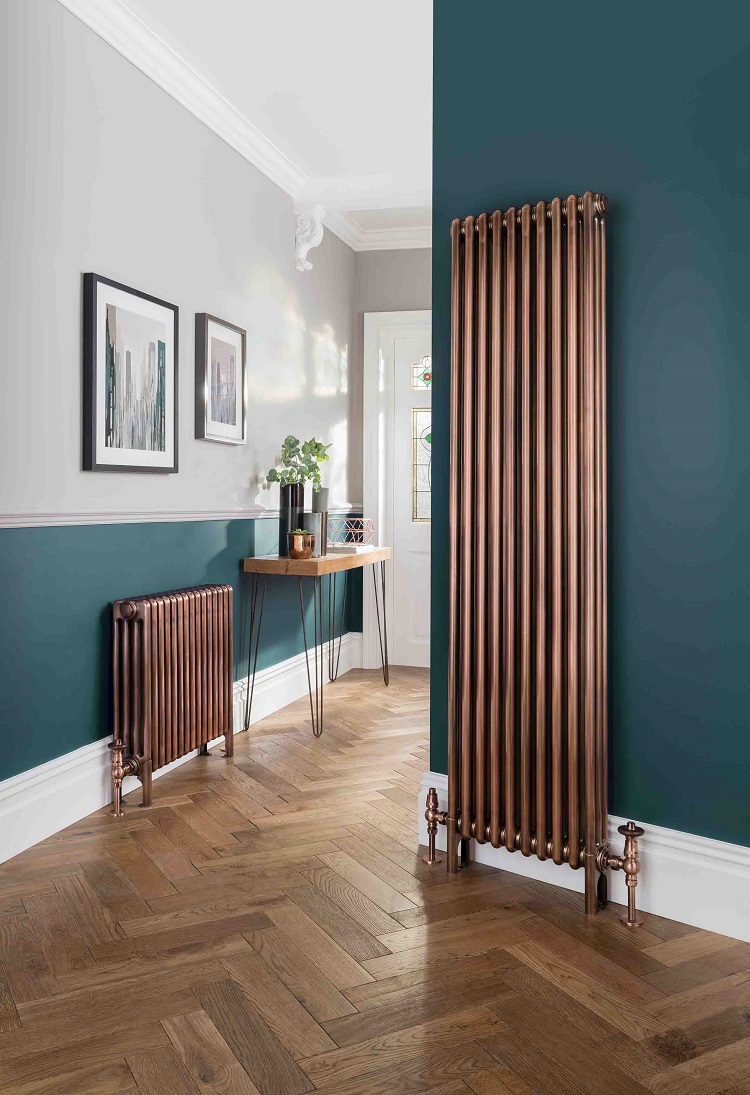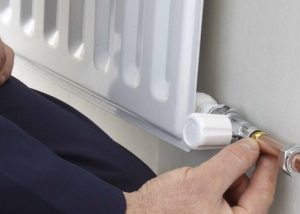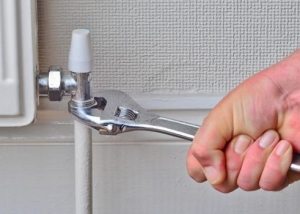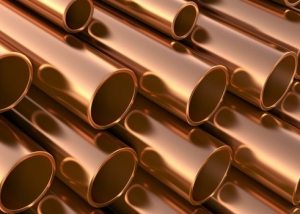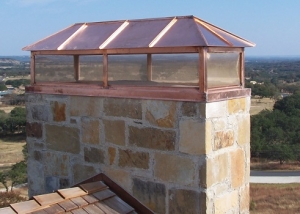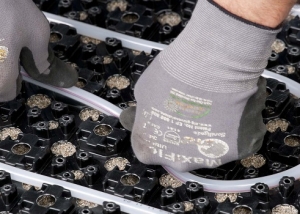Today, copper heating radiators are not the most popular components of comfort in the house. But those who build “for centuries” know that Western companies have long moved away from the cheap segment and have chosen these heaters as the most durable. They practically do not oxidize, are not susceptible to metal corrosion, quickly warm up the space and have many other advantages over products made of cast iron, steel and aluminum.
Content
- 1 Varieties of copper heating batteries and their specifics
- 2 Main technical parameters of copper batteries
- 3 Important advantages of copper batteries relative to other metal analogues
- 4 Constructive varieties of copper radiators and their features
- 5 Recommendations for choosing copper heating appliances
Varieties of copper heating batteries and their specifics
In rare homes, you can meet copper or copper-aluminum batteries. Everyone is accustomed to the old cast-iron version and more new-fashioned, panel steel and bimetallic (steel plus aluminum) appliances. But at all specialized points, there is a growing interest in these samples of red-yellow metal. Although these heating radiators for an apartment are used extremely rarely, they have no complaints if the wall thickness of the device complies with all standards.
There are alternative and more convenient ways of quickly warming up the premises, including the “warm floor” systems and infrared simulators of fireplaces and paintings. However, of all the variations on the "heating theme" for the private sector, the most common is steam heating.
All heaters, including copper models, are classified:
- conventional radiators (cold air draining from the windows warms up on contact with a warm surface);
- thermal convectors (a special shape of the plates contributes to a faster spread of the heated atmosphere), they are more expensive, but more economical to use.
Copper products can differ not only in quality and wall thickness, but also in type of model:
- Tubular radiators with convection plates.
- Copper-aluminum batteries (soft white metal only on the outside).
- Heated towel rails for the bathroom (justified when all pipes are of the same metal).
In the market of heating equipment there are expensive imported and budget models from domestic manufacturers of different metals. However, there are no inexpensive copper heating radiators anywhere, although you can find relatively cheap ones.
Attention! The affordable price tags for copper batteries are usually attributable to thin-sheet copper, which is impractical for radiators installed in apartments. Or these are products with small dimensions, designed for small rooms.
Main technical parameters of copper batteries
Copper heaters have their own characteristics and advantages. Products from this metal are more expensive than others, but they collectively surpass all other batteries in terms of efficiency and heat conductivity. For example, its thermal conductivity is higher than that of cast iron, about three times, it also doubles that of aluminum and steel, depending on the brand.
Regardless of the design, the inner surface of the copper heat exchangers is smoother than other models.This does not contribute to deposits of calcium scale and rust coming from outside from pipelines.
In addition, the electrolytic reaction of copper does not contribute to the development of microorganisms that live and feed even in a hot coolant. But any bacterial culture quickly multiplies and dies, precipitating: hence a layer of organic matter in the form of black silt with the smell of a swamp in sewer and heating pipes.
Note! In copper appliances for space heating is relatively clean. They work effectively even with prolonged use, so there is no need for their frequent purging or cleaning of the inner surface.
Usually it is this precipitate that will reduce heat transfer due to narrowing of the lumen of pipes and collectors. Plaque in batteries minimizes the throughput of the circulating coolant. Copper heating devices in this regard are much more efficient - inside them, the filler passes much faster, more often than not warming up in the boiler than in a similar system of another metal.
Any kind of this metal will last for many years without the need to clean the heating circuit along with the batteries. It is best carried out with a preventive purpose, if radiators have been working for more than 7-8 years. Then the inner surface will be smooth and clean for a long time, and the outer surface will be warm, regardless of the type of connection and the number of sections.
Helpful information! Copper heating devices are not afraid of water shocks up to 16 atmospheres, due to the ductility of the metal. They practically do not depressurize on spikes and tolerate a temperature increase well up to 150 ° C (with steam heating).
The superior characteristics of copper heating equipment justify their high cost. Experts recommend mounting these radiators in autonomous systems and with central heating. They are also used with liquid antifreeze in the autonomous heating circuit of private houses, so that the system does not freeze during the absence of the owners.
Important advantages of copper batteries relative to other metal analogues
If you do not look at the high price, taking into account the high cost as the main disadvantage, it must be recognized that copper heating radiators have a number of positive properties. Those who are not interested in the “issue price”, but are willing to pay for high quality and long-term operation (without additional maintenance), choose copper heating equipment.
When producing modern heating equipment, only high-quality copper is used. Impurities in the form of inclusions of other metals - up to 0.1-0.2%. This cleanliness ensures high-quality soldering during installation and minimizes corrosion processes when using any device.
The main advantages of copper heating devices:
- adapted to the conditions of urban heating networks and the private sector in terms of total load and internal pressure;
- during technological installation, 2-3 generations will last (40-60 years), which confirms the experience of Western construction companies);
- high heat transfer of copper - a guarantee of rapid heating of the room when starting heating;
- a good indicator of metal inertia makes it possible to use thermostats after heating and to maintain heat in the room for a long time in a natural way;
- with small dimensions, they give the same amount of calories as impressive cast-iron "accordions" with a lot of weight;
- even the simplest design (a tube with ribs without convection plates) provides quick heating with a small amount of coolant, which is important in a closed loop on expensive antifreeze;
- metal resistance to corrosion damage, aggressive chemicals and acidity of heated filler;
- the low weight of heating devices is a trouble-free installation on walls of drywall, foam concrete and other porous materials;
- plasticity of copper - protection against pressure drops and temperature amplitudes;
- high esthetic properties - radiators do not require coloring and organically fit into any design.
Attention! The listed properties do not mean that these batteries work effectively in any conditions. There is a maximum permissible load level for any product, which is usually indicated in the technical description for the model.
A special property of the red-yellow metal is the formed copper oxide on the inner surface, which gradually forms on the inner wall of the radiator. This is a natural protection of products from the destructive action of fine suspension and chemical solutions in the coolant.
Constructive varieties of copper radiators and their features
Each metal has its own thermal conductivity, mass and tensile strength. But not so long ago, a way was found to improve all indicators through a bimetallic alternative. At first, only steel plus aluminum was used; the products were widely used. Then they decided to replace the steel tube with a more durable copper one. This know-how was to protect the system from rust, clogging the gaps of conventional batteries.
Copper-aluminum radiators seem to stand apart, since these varieties of “solid matter” have excellent qualities even without connection experiments. Metals with different thermal conductivity indicators - prevention of a decrease in the required indicator of air humidity, thanks to positively charged ions.
It is interesting! Many of the school curriculum know that copper and aluminum are antagonists, since the latter is destroyed by an electrolytic reaction, turning into a loose substance. Therefore, this “mix” is rather arbitrary. Copper can be only the base or individual elements, aluminum - external panels and convection plates.
Some models are equipped with a protective cover for aesthetics and product protection. Often this is also desired to give a streamlined shape - relevant for installation in a children's room. The design usually has convection plates to enhance the circulation of warm air currents. Design models can have a casing made of wood, which is popular for country houses made of timber.
Another option is classic tubular models with parallel vertical or horizontal tubes. Their simple design is for fans of a conservative interior, who monitor the sterile cleanliness of the house. In such a battery, dust does not linger, which is important for allergy sufferers and those suffering from bronchial asthma. Tubes of the same shape with a reliable joint system are not threatened by deformation and leakage. Another feature is the uniform heating temperature.
Copper heated towel rails are most often purchased for auxiliary rooms:
- mini pool;
- private saunas;
- Bathrooms and showers;
- Bathrooms
These tubular products are quite aesthetic, combine a double functionality - maintaining heat and drying towels or underwear.
Helpful advice! Due to the high prices of copper, these heating devices are chosen only for private houses, where the entire heating circuit is made of one metal.
Recommendations for choosing copper heating appliances
Copper-aluminum heating radiators are classified as convection type devices. The cold air sliding from the windows heats up as it passes between the plates or edges of the batteries, rising with acceleration.
These bimetallic devices are usually more expensive than aluminum-steel analogues, but their quality is not in doubt, they have a longer service life. Most often, it is copper-aluminum batteries that rank first.
When buying, it is worth paying attention not only to the cost of products, but, first of all, to the heat transfer parameters in relation to the volume of air in the room. All important characteristics are indicated in the description of the model or technical data sheet.
There are general terms and abbreviations. For example, RB (radiator with side connection), RBD (lateral diagonal connection method) or RNL (lower side). The most high-quality and fastest installation of copper products provides a threaded connection, only specialists undertake soldering.
Helpful advice! There are several ways to choose the volume of the device for heating the room. These are specialized computer programs and special formulas where data on the area of a heated room or the volume of air in cubic meters are entered. To recognize him, we multiply the length, height and width of the room.
Copper batteries warm up faster than other varieties, the amount of coolant circulating in them is about twice as fast with a gravity-flow closed-loop system. Therefore, they are preferred for the private sector - small heating blocks have a higher efficiency than bulky cast-iron batteries or lightweight steel panel-type radiators.
